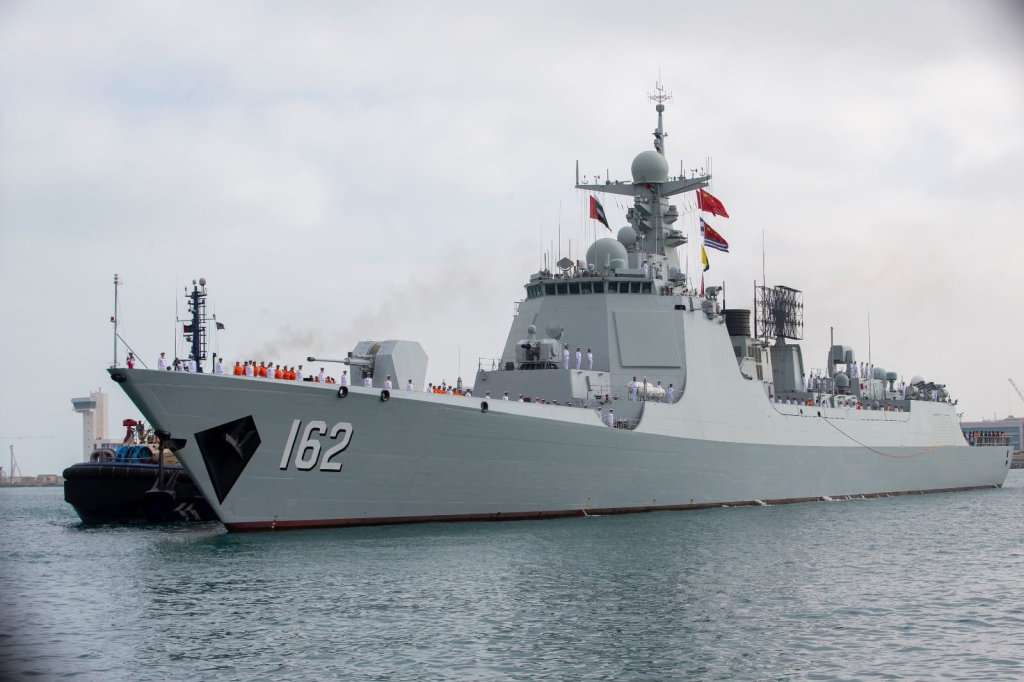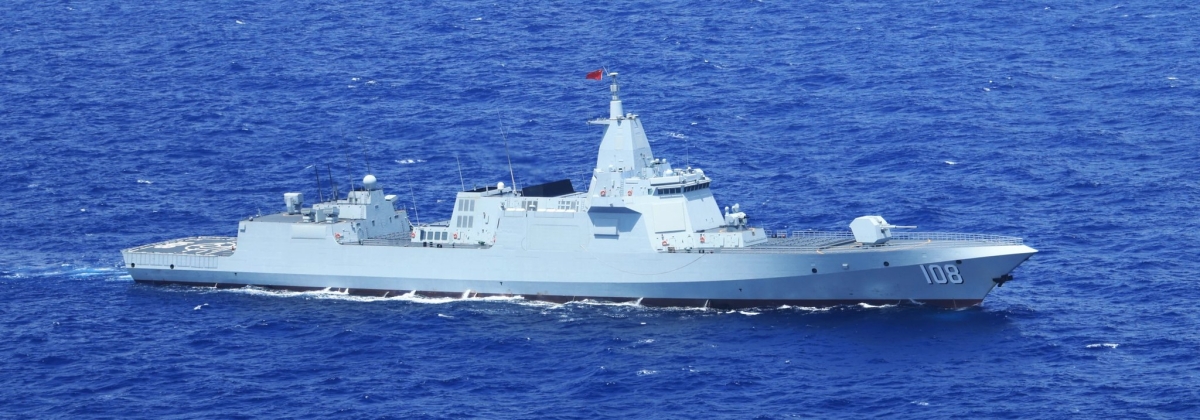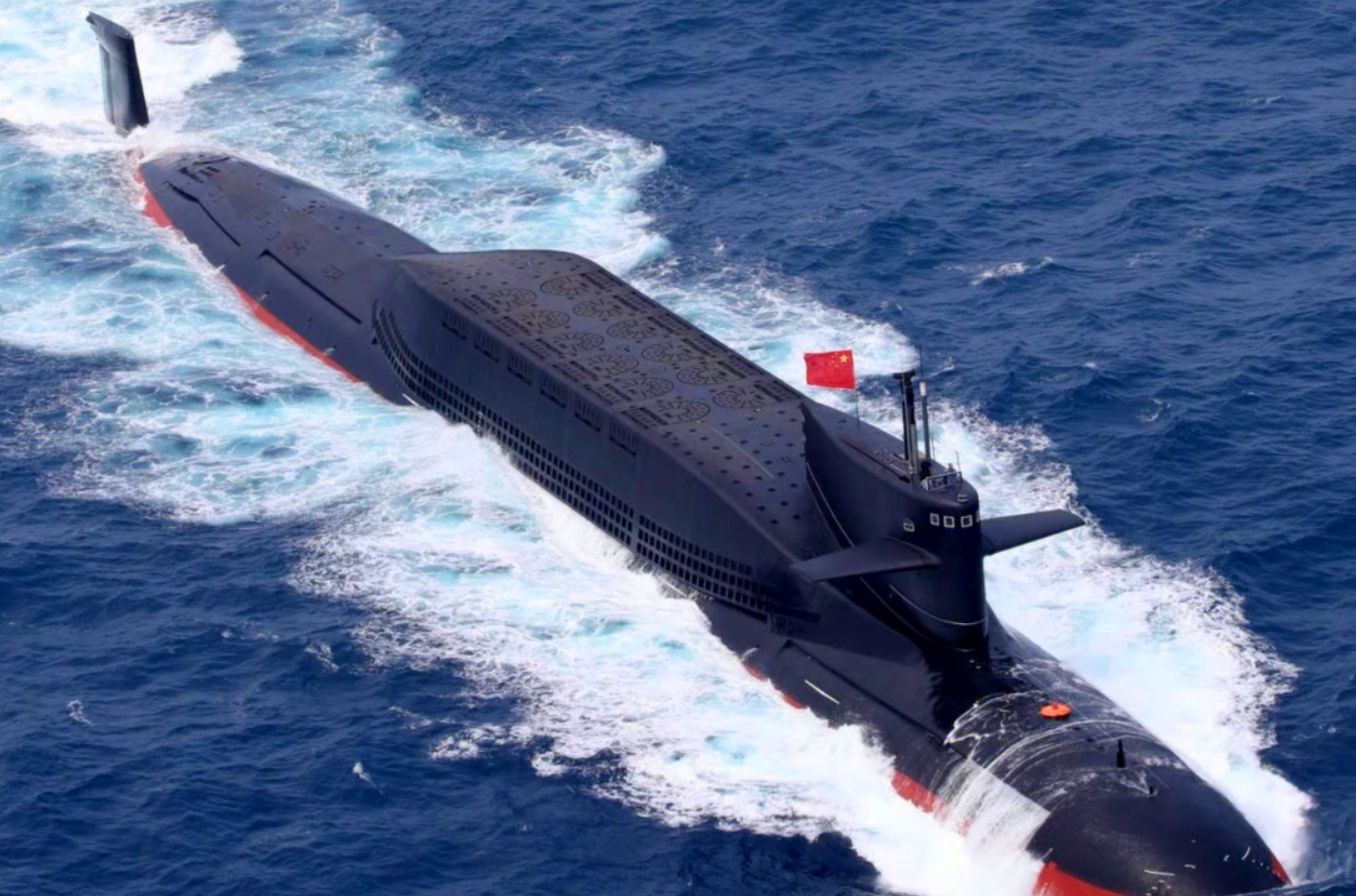HariPrasad-1
Senior Member
- Joined
- Jan 7, 2016
- Messages
- 9,621
- Likes
- 21,088
JULY 17, 2023
The pace at which the Chinese Navy is building new surface combatants and commissioning them is mind blowing. They are commissioning multiple massive surface combatants and a few submarines every year and have sustained this pace since the early 2010s. They recently overtook the US Navy as the world’s largest navy in terms of fleet size. While the US Navy retains a qualitative edge, the Chinese navy’s numbers are a big worry for everyone in their vicinity.
Advertisements
REPORT THIS AD
Advertisements
REPORT THIS AD
The question generally asked though is, while on paper, the Type 052D and Type 055 are extremely capable vessels, are they actually as good in practice? One interesting thing I learnt recently is that the crews at getting to command positions fairly quickly. While commanders in western navies spend years if not decades rising through different officer ranks towards their first command, it seems to be far shorter in the Chinese Navy. The Commanding Officer of a Type 055 only had 7 years of service. The CO was commanding one of the most potent destroyers in service today but had spent just a third of a time it takes a US Navy officer to become a CO. What does it say about officers and crew in lower ranking positions? You can guess. But then, just how good are the ships?
The earliest notions of poor designs I had heard off came from Chinese forums mentioning that ships deployed to the Indian ocean for “Anti-Piracy” ops had issues. These issues ranged from lack of a maintenance first designs, where machinery spaces were not designed for easy maintenance and / or disassembly. Posters on the forum claimed that these had been rectified in the following iterations of the Type 054A and Type 052C, D. The second issue I read about was that doors facing to the sea opened inwards, as in if the lock fails, a big wave could open the door and flood the compartment. This is major oversight in ship design as China’s own waters see storms several times a year.

Trusted naval analyst Xavier Vavasseur [@xaviervav] had the opportunity to visit a Type 052DL destroyer named Nanning. Now remember, 052DLs are the latest variant of the 052D and feature an elongated flight deck, thus a longer overall length. We can assume that these are the latest specimen of the Chinese naval design culture. He was happy to see the ship in excellent condition and goes on to compare it to ships about to delivered to navies for commissioning. The analyst was surprised to see just a couple of water tight doors / compartments between the area he was allowed to tour. He also noticed a severe lack of damage control and fire fighting equipment. What was worse was that fuel for the RHIB and torpedoes had no blast doors between them. He goes on to compare the Chinese destroyer to the other naval vessels he has visited, stating that other ships were littered with fire fighting gear and water tight doors. Below is the area he is talking about.



Here is a link to the original podcast with the Defense and Aerospace Report. Times of interest are 28:40 to 37:15, please do listen.
This shows a severe lack of damage control culture. The podcast rightfully mentions that the damage control procedures are not developed but written in blood.
Ask that to Royal Navy’s Admiral David Beatty, who lost multiple battlecruisers at the Battle of Jutland in WW1 due to poor ammuition handling practises. Ask this to US Navy’s tin can sailors of the Taffey 3 at the Battle off Samar that were forced to patch holes faster than the Japanese were poking into their ships. These tin can sailors due to their valor, tactics and battle damage practises turned away a faaar larger, faaar more capable Imperial Japanese flotilla. Here Yamato, the world’s largest battleship, alone out displaced the entire American force.

Battle damage control is cruicial to saving ships during combat. If a ship combusts itself at first contact with enemy, your fleet will dwindle down fast. You need ships to live and fight another day. What is far more important than a simple hull is the crew. Every ship needs 100s of trained personnel to operate them. The crew is far more important than a ship. A new ship with a poor crew is worse than an older ship with a well trained crew. Looks like, while the Chinese navy ships are great on paper, they miss out on the finer details cruicial at making good ships.

 battlemachines.org
battlemachines.org
The pace at which the Chinese Navy is building new surface combatants and commissioning them is mind blowing. They are commissioning multiple massive surface combatants and a few submarines every year and have sustained this pace since the early 2010s. They recently overtook the US Navy as the world’s largest navy in terms of fleet size. While the US Navy retains a qualitative edge, the Chinese navy’s numbers are a big worry for everyone in their vicinity.
Advertisements
REPORT THIS AD
Advertisements
REPORT THIS AD
The question generally asked though is, while on paper, the Type 052D and Type 055 are extremely capable vessels, are they actually as good in practice? One interesting thing I learnt recently is that the crews at getting to command positions fairly quickly. While commanders in western navies spend years if not decades rising through different officer ranks towards their first command, it seems to be far shorter in the Chinese Navy. The Commanding Officer of a Type 055 only had 7 years of service. The CO was commanding one of the most potent destroyers in service today but had spent just a third of a time it takes a US Navy officer to become a CO. What does it say about officers and crew in lower ranking positions? You can guess. But then, just how good are the ships?
The earliest notions of poor designs I had heard off came from Chinese forums mentioning that ships deployed to the Indian ocean for “Anti-Piracy” ops had issues. These issues ranged from lack of a maintenance first designs, where machinery spaces were not designed for easy maintenance and / or disassembly. Posters on the forum claimed that these had been rectified in the following iterations of the Type 054A and Type 052C, D. The second issue I read about was that doors facing to the sea opened inwards, as in if the lock fails, a big wave could open the door and flood the compartment. This is major oversight in ship design as China’s own waters see storms several times a year.

Trusted naval analyst Xavier Vavasseur [@xaviervav] had the opportunity to visit a Type 052DL destroyer named Nanning. Now remember, 052DLs are the latest variant of the 052D and feature an elongated flight deck, thus a longer overall length. We can assume that these are the latest specimen of the Chinese naval design culture. He was happy to see the ship in excellent condition and goes on to compare it to ships about to delivered to navies for commissioning. The analyst was surprised to see just a couple of water tight doors / compartments between the area he was allowed to tour. He also noticed a severe lack of damage control and fire fighting equipment. What was worse was that fuel for the RHIB and torpedoes had no blast doors between them. He goes on to compare the Chinese destroyer to the other naval vessels he has visited, stating that other ships were littered with fire fighting gear and water tight doors. Below is the area he is talking about.



Here is a link to the original podcast with the Defense and Aerospace Report. Times of interest are 28:40 to 37:15, please do listen.
This shows a severe lack of damage control culture. The podcast rightfully mentions that the damage control procedures are not developed but written in blood.
Ask that to Royal Navy’s Admiral David Beatty, who lost multiple battlecruisers at the Battle of Jutland in WW1 due to poor ammuition handling practises. Ask this to US Navy’s tin can sailors of the Taffey 3 at the Battle off Samar that were forced to patch holes faster than the Japanese were poking into their ships. These tin can sailors due to their valor, tactics and battle damage practises turned away a faaar larger, faaar more capable Imperial Japanese flotilla. Here Yamato, the world’s largest battleship, alone out displaced the entire American force.

Battle damage control is cruicial to saving ships during combat. If a ship combusts itself at first contact with enemy, your fleet will dwindle down fast. You need ships to live and fight another day. What is far more important than a simple hull is the crew. Every ship needs 100s of trained personnel to operate them. The crew is far more important than a ship. A new ship with a poor crew is worse than an older ship with a well trained crew. Looks like, while the Chinese navy ships are great on paper, they miss out on the finer details cruicial at making good ships.

Are Chinese Naval Ships Poorly Designed?
The pace at which the Chinese Navy is building new surface combatants and commissioning them is mind blowing. They are commissioning multiple massive surface combatants and a few submarines every y…
 battlemachines.org
battlemachines.org




